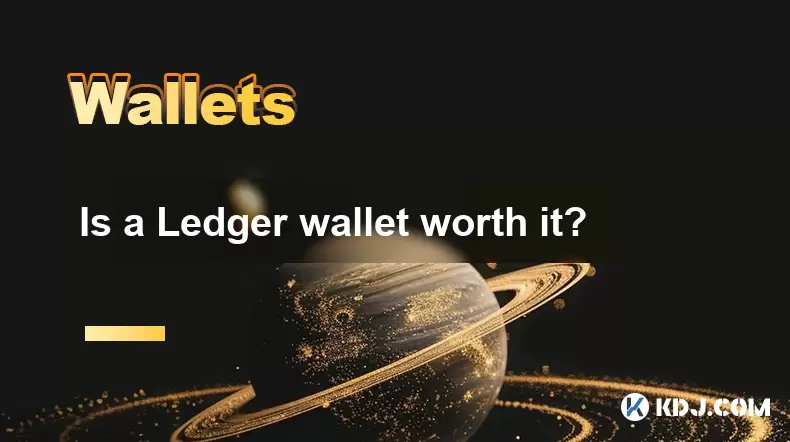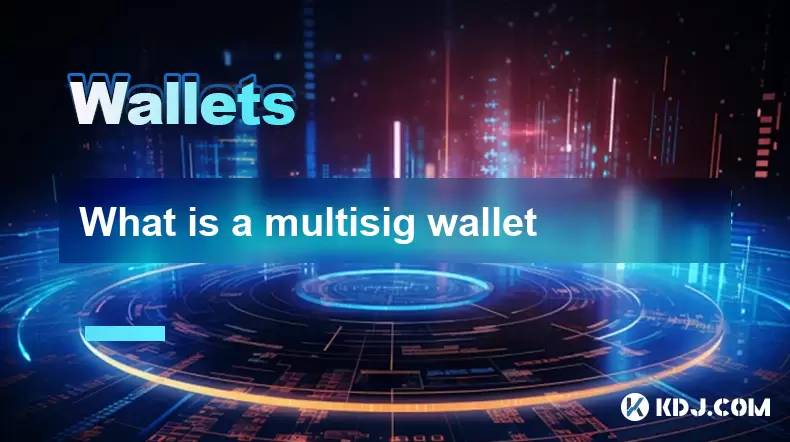-
 Bitcoin
Bitcoin $118,209.3536
1.16% -
 Ethereum
Ethereum $3,151.7546
5.98% -
 XRP
XRP $2.9277
2.35% -
 Tether USDt
Tether USDt $1.0000
0.00% -
 BNB
BNB $689.7099
1.26% -
 Solana
Solana $163.4270
1.91% -
 USDC
USDC $1.0000
0.02% -
 Dogecoin
Dogecoin $0.1983
3.74% -
 TRON
TRON $0.3008
0.51% -
 Cardano
Cardano $0.7435
2.86% -
 Hyperliquid
Hyperliquid $47.6547
-0.48% -
 Stellar
Stellar $0.4625
2.79% -
 Sui
Sui $3.9921
2.71% -
 Chainlink
Chainlink $16.0608
4.23% -
 Hedera
Hedera $0.2348
1.56% -
 Bitcoin Cash
Bitcoin Cash $496.6985
1.25% -
 Avalanche
Avalanche $21.9038
5.41% -
 UNUS SED LEO
UNUS SED LEO $8.8356
-1.88% -
 Shiba Inu
Shiba Inu $0.0...01364
5.31% -
 Toncoin
Toncoin $3.1102
4.35% -
 Litecoin
Litecoin $95.9756
3.59% -
 Polkadot
Polkadot $4.0925
5.78% -
 Monero
Monero $333.7622
-1.44% -
 Uniswap
Uniswap $9.1968
2.25% -
 Bitget Token
Bitget Token $4.6378
6.23% -
 Pepe
Pepe $0.0...01282
6.77% -
 Dai
Dai $1.0002
0.03% -
 Ethena USDe
Ethena USDe $1.0005
0.00% -
 Aave
Aave $329.9143
4.49% -
 Bittensor
Bittensor $441.4995
6.89%
Is a Ledger wallet worth it?
A Ledger wallet securely stores cryptocurrencies offline, protecting private keys with a tamper-proof chip and PIN code.
Jul 10, 2025 at 03:07 pm

Understanding the Ledger Wallet Ecosystem
A Ledger wallet is a type of hardware cryptocurrency wallet, designed to offer users a secure way to store, manage, and transact with their digital assets. Unlike software wallets that are susceptible to online threats such as hacking or phishing attacks, Ledger wallets operate offline, ensuring that private keys never leave the device. This makes them one of the most trusted options for securing cryptocurrencies like Bitcoin, Ethereum, and various altcoins.
The core functionality of a Ledger wallet revolves around its secure element chip, which acts as a tamper-proof vault for cryptographic operations. Every transaction must be physically confirmed on the device's screen, adding an extra layer of protection against unauthorized access. Users can interact with the wallet via the Ledger Live application, which allows for easy management of multiple accounts, token swaps, staking, and more.
Security Features That Set Ledger Apart
One of the main reasons people opt for a Ledger wallet is its robust security architecture. The BOLOS operating system used by Ledger isolates each app running on the device, preventing malicious code from interfering with sensitive data. Additionally, the 24-word recovery phrase ensures that even if the physical device is lost or damaged, users can recover their funds on another compatible wallet.
Another standout feature is the PIN code protection. If someone tries to guess your PIN too many times, the wallet will automatically wipe all data, preventing brute-force attacks. Moreover, Ledger wallets support two-factor authentication (2FA) when used in conjunction with third-party services, further enhancing account security.
Supported Cryptocurrencies and Tokens
A major advantage of using a Ledger wallet is the wide array of supported cryptocurrencies. As of now, it supports over 1800+ coins and tokens, including popular ones like:
- Bitcoin (BTC)
- Ethereum (ETH)
- Litecoin (LTC)
- Ripple (XRP)
- Cardano (ADA)
- Polkadot (DOT)
- Solana (SOL)
- Binance Coin (BNB)
Each blockchain requires a separate app installation on the device, which can be done easily through the Ledger Live interface. These apps allow you to send, receive, and stake assets directly from the wallet without compromising security.
User Experience and Interface Navigation
Using a Ledger wallet involves a few initial setup steps but becomes intuitive once configured. To begin:
- Connect the wallet to your computer or mobile device via USB or Bluetooth (depending on the model).
- Install the Ledger Live application.
- Create a new wallet or restore one using your 24-word recovery phrase.
- Set up a PIN code.
- Install the desired cryptocurrency apps.
Transactions are initiated through the Ledger Live app, where you confirm every action on the wallet’s screen. This dual confirmation process adds an essential layer of security, ensuring that no transaction can occur without your explicit approval.
Comparing Ledger Nano S and Ledger Nano X
There are two primary models available: the Ledger Nano S and the Ledger Nano X. While both serve the same fundamental purpose, they differ in features and convenience.
The Nano S is the more affordable option, featuring a basic OLED screen and USB connectivity. It supports fewer simultaneous apps due to limited onboard storage, requiring frequent switching between applications.
The Nano X, on the other hand, offers Bluetooth connectivity, a larger memory capacity for holding multiple apps at once, and a slightly larger display. These enhancements make it ideal for users who manage a diverse portfolio across multiple blockchains.
Pricing and Value Proposition
Pricing for Ledger wallets varies depending on the model and retailer. The Nano S typically ranges between $50-$60, while the Nano X usually costs between $110-$130. These prices may seem high compared to free software wallets, but they represent a small investment relative to the potential value of stored crypto assets.
It’s crucial to consider the cost of a Ledger wallet not just in monetary terms, but also in terms of peace of mind. For anyone holding significant amounts of cryptocurrency, the added security and control justify the expense. Furthermore, purchasing directly from the official Ledger website or authorized resellers helps avoid counterfeit products.
Frequently Asked Questions
Q: Can I use a Ledger wallet without connecting it to my computer?
A: No, the Ledger Nano S and Nano X require connection to a computer or mobile device via USB or Bluetooth respectively for initial setup and ongoing management through the Ledger Live app.
Q: What happens if I lose my Ledger wallet?
A: Your funds remain safe as long as you have your 24-word recovery phrase. You can restore your wallet on any compatible hardware or software wallet using this phrase.
Q: Does Ledger store my private keys or personal information?
A: No, Ledger does not store your private keys or personal data on their servers. All sensitive information remains on the device or within your local environment.
Q: Are firmware updates mandatory for Ledger wallets?
A: Yes, keeping your Ledger wallet’s firmware updated is essential for maintaining security and compatibility with new features or supported cryptocurrencies. Updates are performed through the Ledger Live application.
Disclaimer:info@kdj.com
The information provided is not trading advice. kdj.com does not assume any responsibility for any investments made based on the information provided in this article. Cryptocurrencies are highly volatile and it is highly recommended that you invest with caution after thorough research!
If you believe that the content used on this website infringes your copyright, please contact us immediately (info@kdj.com) and we will delete it promptly.
- Bitcoin, Crypto, and Rate Cut Hopes: A Bullish Brew for the Summer?
- 2025-07-17 00:30:12
- Swedish Refine Group's $1M Bitcoin Treasury Strategy: A Growing Trend
- 2025-07-17 00:30:13
- Avalanche Onchain Insights: Token Relations Unveils Comprehensive Dashboards
- 2025-07-16 22:50:13
- Standard Chartered's Crypto Leap: Regulated Trading and Stablecoin Focus
- 2025-07-16 23:30:13
- Rare Coin Alert: Darwin, Ipswich, and Hidden Treasures!
- 2025-07-16 23:30:13
- Shiba Inu vs. Remittix: Can Remittix Deliver Gains Faster?
- 2025-07-16 23:35:13
Related knowledge

What is a hardware wallet's secure element
Jul 11,2025 at 10:14pm
What is a Hardware Wallet's Secure Element?A hardware wallet is one of the most secure ways to store cryptocurrencies. Unlike software wallets, which ...

How to track crypto whale wallets
Jul 16,2025 at 10:00am
What Are Crypto Whale Wallets?Crypto whale wallets refer to large cryptocurrency holdings controlled by individuals or entities that have the potentia...

What is the difference between a custodial and non-custodial wallet
Jul 13,2025 at 03:21am
Understanding Wallet Types in CryptocurrencyIn the world of cryptocurrency, digital wallets play a crucial role in managing and securing assets. A wal...

What is a multisig wallet
Jul 16,2025 at 01:42am
Understanding the Concept of a Multisig WalletA multisignature (multisig) wallet is a type of cryptocurrency wallet that requires more than one privat...

How to add a new network to MetaMask
Jul 11,2025 at 11:42pm
Understanding the Need to Add a New NetworkWhen using MetaMask, a popular Ethereum-based cryptocurrency wallet, users often need to interact with diff...

How to add Ethereum L2 networks like Arbitrum to Trezor
Jul 11,2025 at 12:36am
What Is Ethereum L2 and Why Add It to Trezor?Ethereum Layer 2 (L2) networks, such as Arbitrum, are scaling solutions designed to reduce congestion on ...

What is a hardware wallet's secure element
Jul 11,2025 at 10:14pm
What is a Hardware Wallet's Secure Element?A hardware wallet is one of the most secure ways to store cryptocurrencies. Unlike software wallets, which ...

How to track crypto whale wallets
Jul 16,2025 at 10:00am
What Are Crypto Whale Wallets?Crypto whale wallets refer to large cryptocurrency holdings controlled by individuals or entities that have the potentia...

What is the difference between a custodial and non-custodial wallet
Jul 13,2025 at 03:21am
Understanding Wallet Types in CryptocurrencyIn the world of cryptocurrency, digital wallets play a crucial role in managing and securing assets. A wal...

What is a multisig wallet
Jul 16,2025 at 01:42am
Understanding the Concept of a Multisig WalletA multisignature (multisig) wallet is a type of cryptocurrency wallet that requires more than one privat...

How to add a new network to MetaMask
Jul 11,2025 at 11:42pm
Understanding the Need to Add a New NetworkWhen using MetaMask, a popular Ethereum-based cryptocurrency wallet, users often need to interact with diff...

How to add Ethereum L2 networks like Arbitrum to Trezor
Jul 11,2025 at 12:36am
What Is Ethereum L2 and Why Add It to Trezor?Ethereum Layer 2 (L2) networks, such as Arbitrum, are scaling solutions designed to reduce congestion on ...
See all articles

























































































